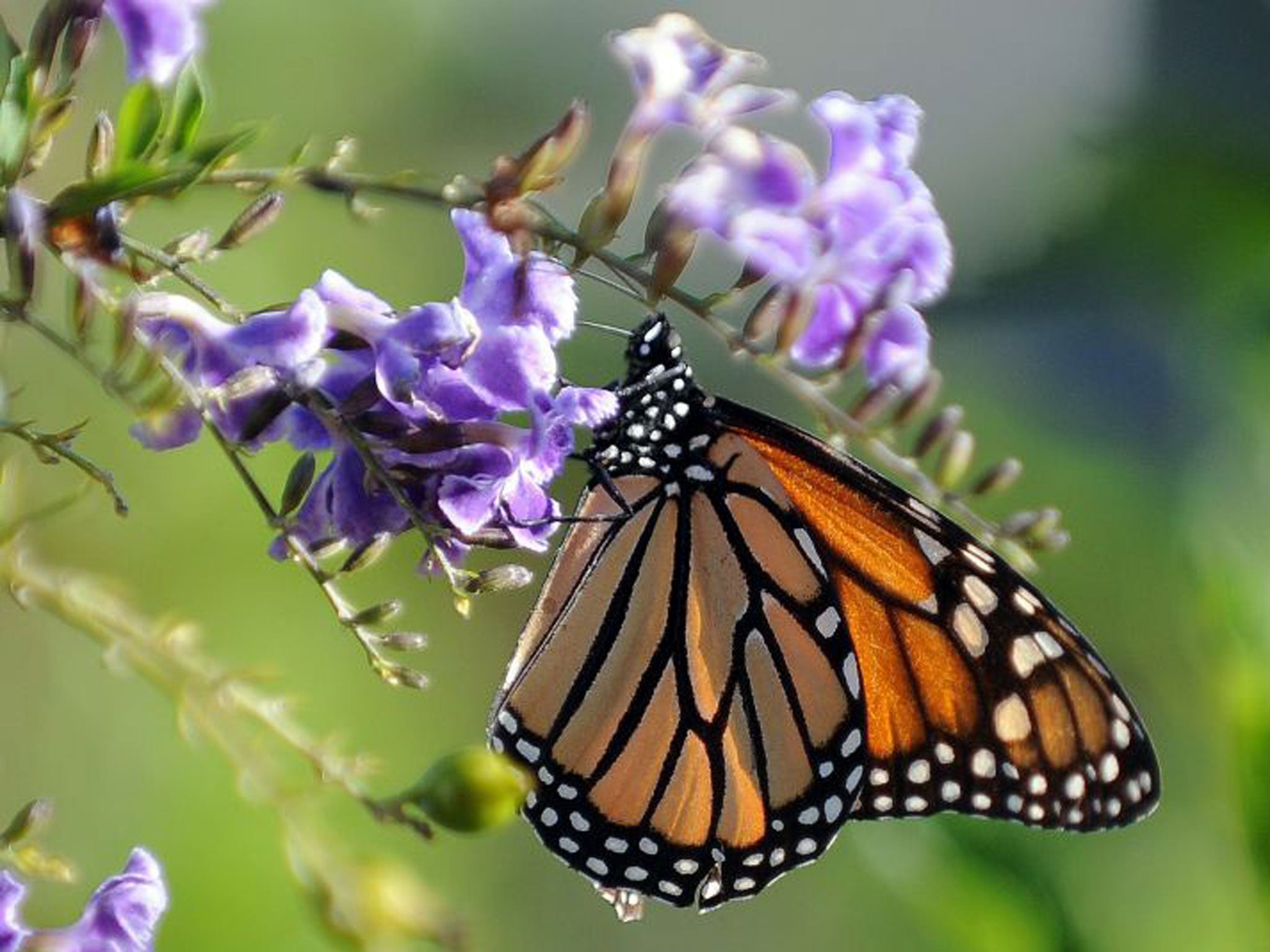Monarch butterfly: Single gene holds key to understanding 3,000 mile migration feat
At the end of each summer, monarch butterflies across the North American continent migrate south

A single gene appears to hold the secret of how the monarch butterfly of North America is able to carry out one of the most amazing feats of migration in the animal kingdom which sees the species make a yearly round-trip of more than 3,000 miles.
The sequencing of the genomes of 101 butterflies has revealed that a gene involved with the muscles controlling the monarch’s wings has enabled the insect to make is long-distance migration from Mexico to Canada and back again each year.
At the end of each summer, monarch butterflies across the North American continent migrate south, mostly to Mexico whether they spend the winter hibernating on oyamel fir trees. As spring arrives, they move north in brightly-coloured clouds of orange and black to breed, eventually reaching as far as the US-Canadian border.
Throughout the breeding season, successive generations of monarch butterflies migrate northwards for many hundreds of miles to take advantage of the ripening milkweed plants on which their caterpillars feed. The genomic analysis shows how the migration relies on a specific gene that has been honed by evolution over thousands of generations.
Scientists have found that migratory monarchs, when compared to its non-migratory cousins living further south in Central and South America, have a greatly reduced level of a gene called collagen IV alpha-1, which is involved in flight muscle formation and function.
The researchers believe this genetic difference allows the migratory forms of the monarch butterfly to consume less oxygen than its non-migratory cousins because it has a significantly lower metabolic rate when flying, which gives it the ability to travel long distances without becoming exhausted.
The study, published in the journal Nature, compared the genomes of migratory monarchs of North America to the rarer populations of the species in Central and South America, which have lost their ability to migrate long distances, said Marcus Kronfrost of the University of Chicago.
“Migration is regarded as a complex behaviour, but every time that the butterflies have lost migration, they change in exactly the same way, in this one gene involved in flight-muscle efficiency,” Professor Kronfrost said.
“In populations that have lost migration, efficiency goes down, suggesting there is a benefit to flying fast and hard when they don’t need to migrate,” he said.
It was originally thought that the migratory forms of the species evolved from the non-migratory populations but the genomic analysis suggests the reverse, with some migratory individuals dispersing so far away that they ultimately lose their ability to migrate back.
“The results of this study shift our whole thinking about these butterflies, said Professor Kronfrost, the senior author of the study.
In 1996, about a billion monarch butterflies migrated to Mexico to hibernate, but in 2013 researchers estimated that this figure had dropped to about 35 million, due to the use of agricultural pesticides and other changes to the butterfly’s habitat.
“You used to see huge numbers of monarchs, clouds of them passing by. Now it looks quite possible that in the not too distant future, this annual migration won’t happen,” Professor Kronfrost said.
The scientists have also identified the gene that imparts the distinctive orange, black and white coloration to the wings of the insect, which warns predators that the butterfly is potentially toxic when eaten.
Subscribe to Independent Premium to bookmark this article
Want to bookmark your favourite articles and stories to read or reference later? Start your Independent Premium subscription today.

Join our commenting forum
Join thought-provoking conversations, follow other Independent readers and see their replies